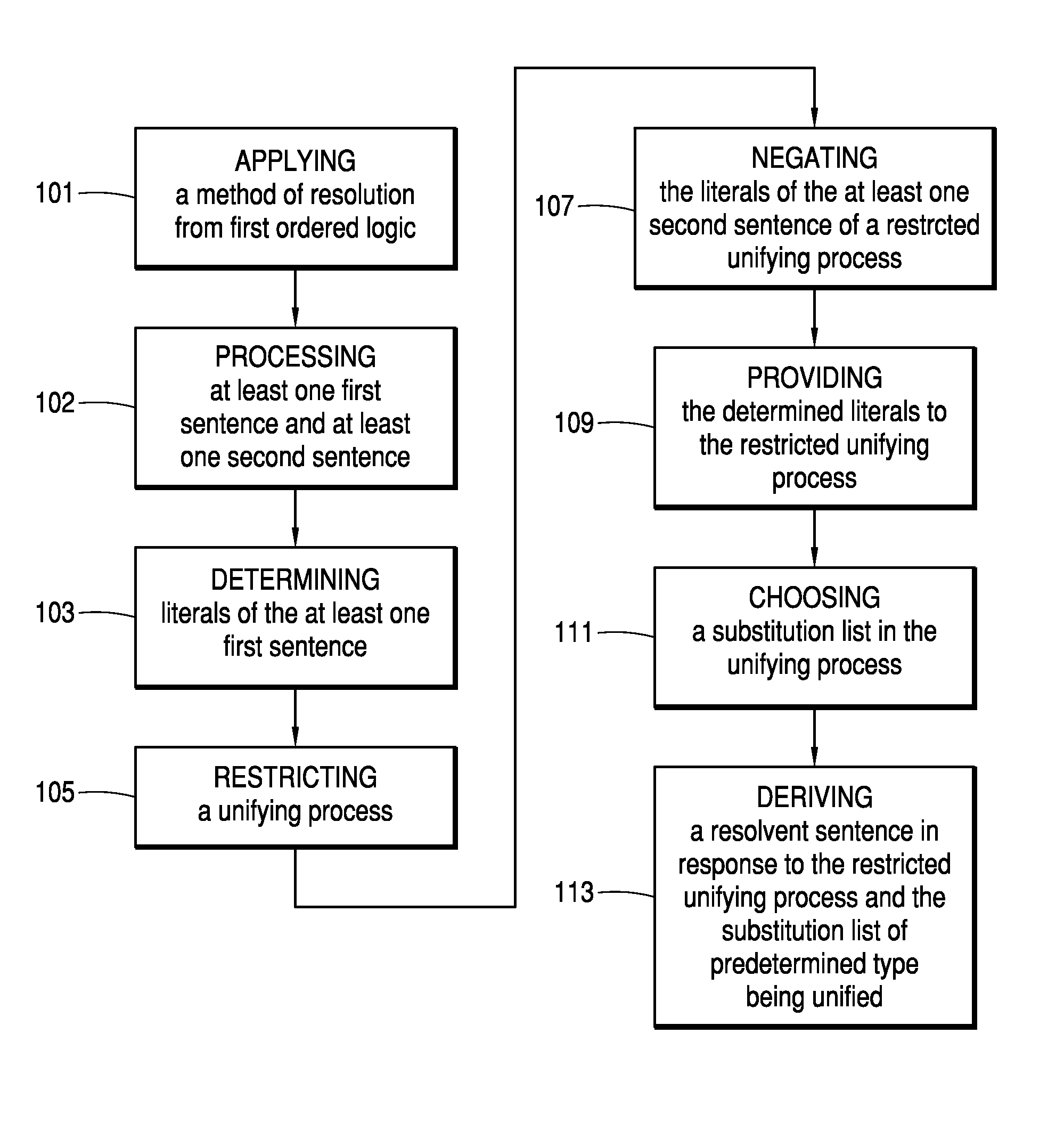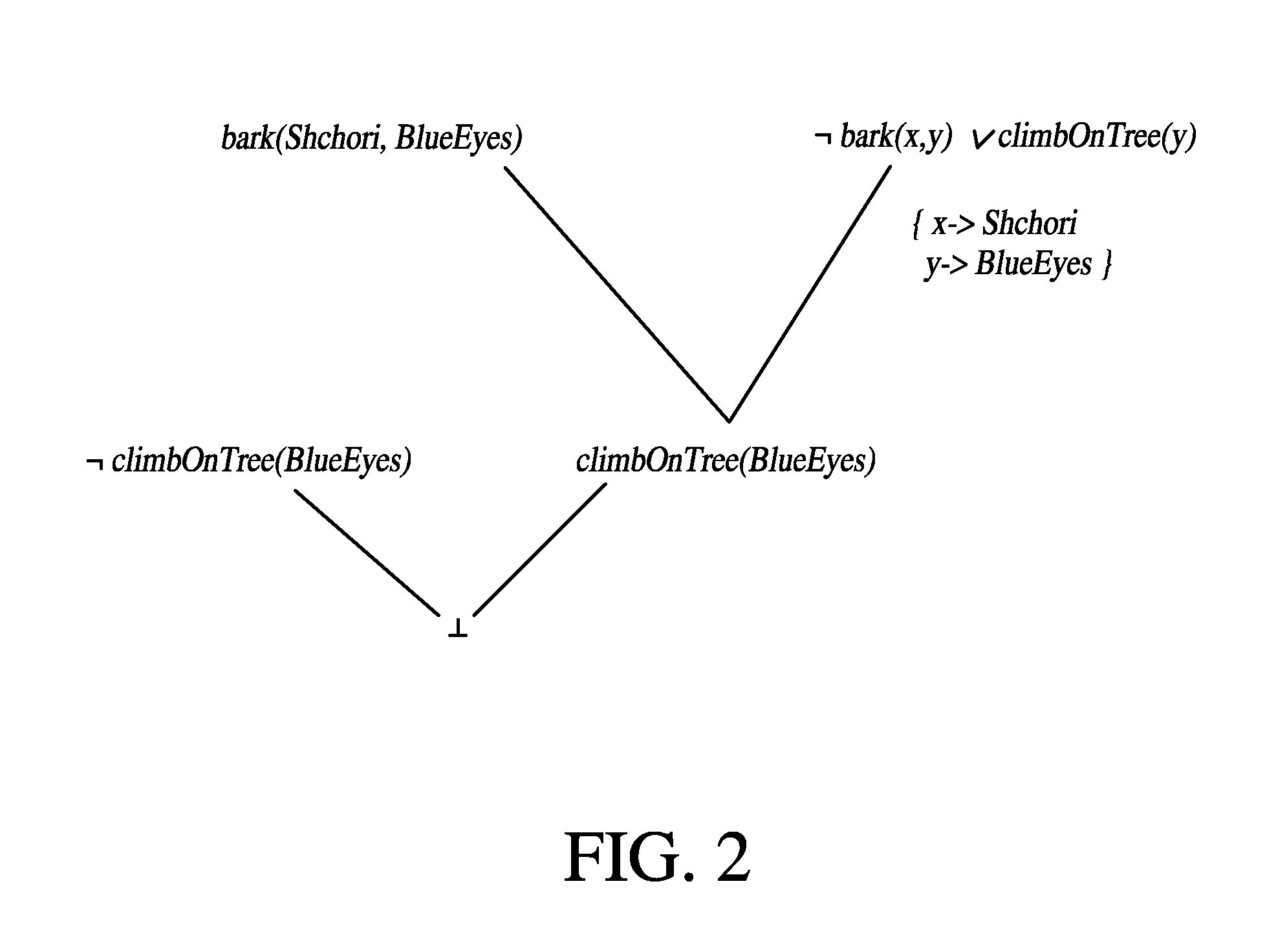Automated many-sorted theorem prover
a theorem prover and automatic technology, applied in the field of information processing and artificial intelligence, can solve the problems of reducing expressiveness, increasing search space, slowing down the search portion of the algorithm,
- Summary
- Abstract
- Description
- Claims
- Application Information
AI Technical Summary
Problems solved by technology
Method used
Image
Examples
example 1
Conventional First-Order Logic Automated Theorem Solver
Hypotheses:
[0044]forall x:DOG forall y:CAT bark(x,y)→climbOnTree(y)[0045]bark (Shchori, BlueEyes)
Conclusion:[0046]climbOnTree(BlueEyes).
After translating to first-order logic, the clausal form for Example 1 is:
[0047]
DOG(x) — CAT(x) DOG(x) _ CAT(x) DOG(x) _ CAT(y) _ bark(x,y) —climbOnTree(y)bark ( , BlueEyes )CAT(BlueEyes)DOG( )
The negation of the conclusion is:[0048]climbOnTree(BlueEyes).
[0049]In the case of conventional first-order logic, the domain for this example contains two constants {Shchori, BlueEyes} and the derivation tree is shown in FIG. 1. As illustrated in FIG. 1, working with one domain containing both {Shchori, BlueEyes} dramatically increases the search space. For example, assignment of ‘Shchori’ to the first argument of predicate ‘bark’ is a valid assignment.
[0050]In contrast to the conventional theorem solver of Example 1, having derivation tree, as shown in FIG. 1, embodiments of the invention improve the...
example 2
Many-Sorted First-Order Logic Version of Example 1 using an Exemplary Embodiment of the Method of the Invention
The many-sorted first order logic clausal form of Example 1 is given by:
[0052]
bark(x,y) — climbOnTree(y)bark (Shchori, BlueEyes )
Negation of the conclusion:[0053]climbOnTree(BlueEyes)[0054]where x is a variable of type DOG;[0055]y is a variable of type CAT;[0056]BlueEyes is a constant of type CAT; and[0057]Shchori is a constant of type DOG.
Thus, a valid assignment is only an assignment that assigns Shchori_to_x and BlueEyes to y. This easily follows from the fact that the herbarand model contains only two elements: one BlueEyes of type CAT and Shchori of type DOG, and the fact that the formula contains only two variables: x of type DOG and y of type CA T Therefore x can get only Shchori and y can get only BlueEyes.
[0058]The derivation tree for Example 2 is given in FIG. 2. Comparing the first-order version of the derivation tree of conventional theorem solvers of FIG. 1 to...
PUM
 Login to View More
Login to View More Abstract
Description
Claims
Application Information
 Login to View More
Login to View More - R&D
- Intellectual Property
- Life Sciences
- Materials
- Tech Scout
- Unparalleled Data Quality
- Higher Quality Content
- 60% Fewer Hallucinations
Browse by: Latest US Patents, China's latest patents, Technical Efficacy Thesaurus, Application Domain, Technology Topic, Popular Technical Reports.
© 2025 PatSnap. All rights reserved.Legal|Privacy policy|Modern Slavery Act Transparency Statement|Sitemap|About US| Contact US: help@patsnap.com



